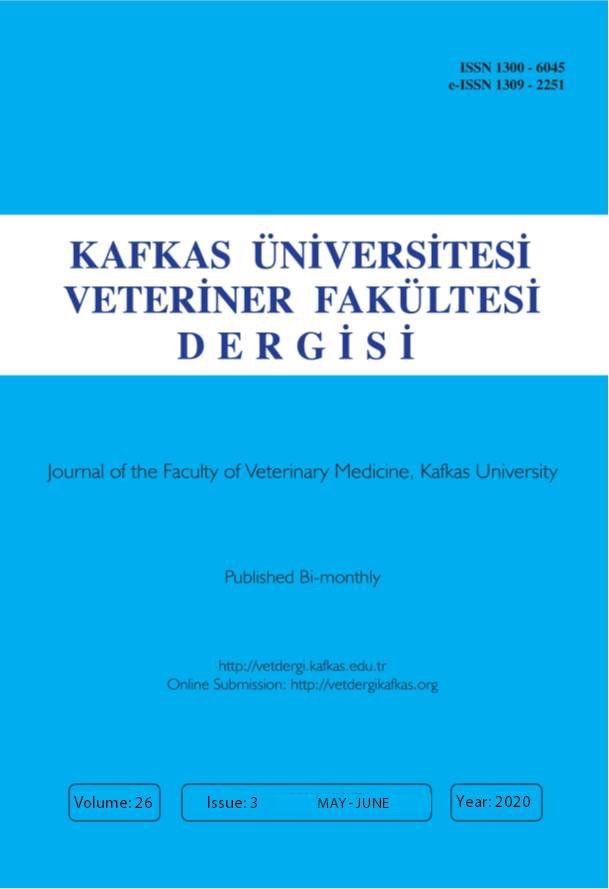
This journal is licensed under a Creative Commons Attribution-NonCommercial 4.0 International License
Kafkas Üniversitesi Veteriner Fakültesi Dergisi
2020 , Vol 26 , Issue 3
The Effects of Calcium Aluminate and Calcium Silicate Cements Implantation on Haematological Profile in Rats
1Department of Pathological Physiology of Domestic Animals, Veterinary Faculty, University of Sarajevo, Bosnia and Herzegovina2Department of Restorative Dentistry and Endodontics, Faculty of Medicine, University of Banja Luka, Bosnia and Herzegovina
3Department of Anatomy and Embryology, Veterinary Faculty, University of Sarajevo, Bosnia and Herzegovina
4Department of Radiobiology with Radiation Hygiene, Biophysics & Environmental Protection, Veterinary Faculty, University of Sarajevo, Bosnia and Herzegovina
5Department of Zoology, Genetics and Evolution, Faculty of Natural Sciences and Mathematics, University of Banja Luka, Bosnia and Herzegovina
6Department of Ecology and Environmental Protection, Faculty of Natural Sciences and Mathematics, University of Banja Luka, Bosnia and Herzegovina
7Department of Zoology, Faculty of Science and Mathematics, University of Banja Luka, Bosnia and Herzegovina
8Institute of Pathology, Clinical Center, Banjaluka, University of Banja Luka, Bosnia and Herzegovina
9Department of Pathology, Faculty of Medicine, University of Banja Luka, Bosnia and Herzegovina DOI : 10.9775/kvfd.2019.23476 The objective of this study was to evaluate potential unfavourable side effects, especially on the blood corpuscles, of experimental calcium aluminate and calcium silicate cements that are applied subdermally or directly to tooth pulp. In the study, fifty-four Wistar rats were separated into two study groups (n=27 in each group). The effects of the dental cements on haematological parameters were observed three times (after 7, 15 and 30 days): erythrocytes, haemoglobin, haematocrit, mean corpuscular volume, mean corpuscular haemoglobin, mean corpuscular haemoglobin concentration, leukocytes, leucogram and poikilocytic erythrocyte forms. There were no statistically significant differences in the total number of leukocytes and percentage results of lymphocytes, and neutrophils. The study recorded lower numbers of erythrocytes, with no connection with the type of material applied to the dental pulp (First study group). Significant differences in results for the second study group were recorded on days 7-15 and 15-30 of the experiment in relation to both types of implanted cements. In the second study group there were significant differences related to both types of implanted cements, in the same periods. Lower values of erythrocytes, haemoglobin and haematocrit indicated the existence of hypochromic anaemia caused by the damaging influence of calcium aluminate and calcium silicate. Research showed that in both study groups, normocytic hypochromic anaemia existed, along with modest to expressed distribution of anulocytes and stomatocytes. According to the results of the research, the negative impact of application of Ca-silicate was recorded and was related to the appearance of hypochromic anaemia with poikilocytic forms of erythrocytes. Keywords : Calcium aluminate, Calcium silicate, Rat, Haematological parameters, Poikilocytic erythrocytes forms










